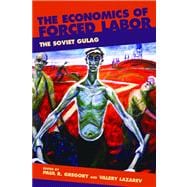
Note: Supplemental materials are not guaranteed with Rental or Used book purchases.
Purchase Benefits
What is included with this book?
| Foreword | vii | ||
|
|||
| Acknowledgments | xiii | ||
| Contributors | xv | ||
| 1 An Introduction to the Economics of the Gulag | 1 | (22) | |
|
|||
| 2 Forced Labor in Soviet Industry: The End of the 1930's to the Mid-1950's: An Overview | 23 | (20) | |
|
|||
| 3 The Economy of the OGPU, NKVD, and MVD of the USSR, 1930-1953: The Scale, Structure, and Trends of Development | 43 | (24) | |
|
|||
| 4 The End of the Gulag | 67 | (8) | |
|
|||
| 5 Coercion versus Motivation: Forced Labor in Norilsk | 75 | (30) | |
|
|||
| 6 Magadan and the Economic History of Dalstroi in the 1930's | 105 | (22) | |
|
|||
| 7 Building Norilsk | 127 | (24) | |
|
|||
| 8 The White Sea-Baltic Canal | 151 | (12) | |
|
|||
| 9 The Gulag in Karelia: 1929 to 1941 | 163 | (26) | |
|
|||
| 10 Conclusions | 189 | (10) | |
|
|||
| List of Acronyms | 199 | (4) | |
| Index | 203 |
The New copy of this book will include any supplemental materials advertised. Please check the title of the book to determine if it should include any access cards, study guides, lab manuals, CDs, etc.
The Used, Rental and eBook copies of this book are not guaranteed to include any supplemental materials. Typically, only the book itself is included. This is true even if the title states it includes any access cards, study guides, lab manuals, CDs, etc.